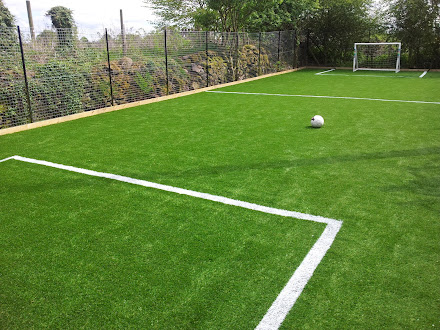The Ultimate Guide to Artificial Grass: Benefits and Installation Tips
Artificial grass, also known as synthetic turf or
fake grass, has gained immense popularity as a versatile and low-maintenance
alternative to natural grass lawns. Whether for residential lawns, commercial
spaces, or sports fields, the benefits of artificial grass are numerous, and
its installation offers a practical solution for a lush, green landscape.
Here's the ultimate guide to artificial grass, outlining its benefits and
providing essential installation tips.
Benefits of
Artificial Grass:
Low Maintenance: One of the primary advantages of artificial
grass is its minimal maintenance requirements. Unlike natural grass, synthetic
turf doesn't need mowing, watering, or fertilizing. This makes it an excellent
choice for individuals or businesses seeking a green landscape without the
hassle of constant upkeep.
Water Conservation: Artificial grass is a
water-efficient option, particularly relevant in regions facing water scarcity.
Its installation helps conserve water resources since it doesn't require
regular irrigation, contributing to environmental sustainability.
Durability: Synthetic turf is highly durable and
can withstand heavy foot traffic and various weather conditions. It remains
vibrant and resilient, maintaining its appearance throughout the year, making
it an ideal solution for high-traffic areas.
All-Weather Utility: Unlike natural grass, which may
become muddy or damaged during heavy rain or intense sunlight, artificial grass
provides a consistent, playable surface in all weather conditions. This makes
it particularly advantageous for sports fields and outdoor recreational spaces.
Cost-Effective: While the initial installation cost
of artificial grass may be higher than natural grass, the long-term savings on
maintenance, water bills, and lawn care products make it a cost-effective
investment. Over time, homeowners and businesses can recoup the upfront expenses.
Installation Tips:
Surface Preparation: Proper surface preparation is
crucial for a successful artificial grass installation. Remove existing grass,
weeds, and debris. Level the surface and ensure good drainage to prevent water
accumulation.
Quality Materials: Invest in high-quality artificial
grass and infill materials. Quality turf will look more natural, be more
durable, and have a longer lifespan. The right infill provides stability and
resilience to the turf.
Professional
Installation: While
some homeowners may opt for a DIY approach, professional installation ensures a
flawless and long-lasting result. Experienced installers have the expertise to
address specific challenges and ensure proper fitting.
Infill Distribution: Distribute the infill material
evenly across the turf to maintain its structure and stability. Proper infill
distribution also contributes to the turf's ability to bounce back after
compression.
Regular Maintenance: While artificial grass requires less
maintenance than natural grass, regular cleaning is essential. Remove debris,
leaves, and any organic matter. Occasional brushing helps maintain the turf's
appearance and prevent matting.
In conclusion, artificial grass offers a host of benefits
and, when installed with care, can transform outdoor spaces into lush, green
landscapes with minimal upkeep. Whether for residential lawns or sports fields,
the versatility and durability of artificial grass make it a practical and
appealing choice for a wide range of applications.




Comments
Post a Comment